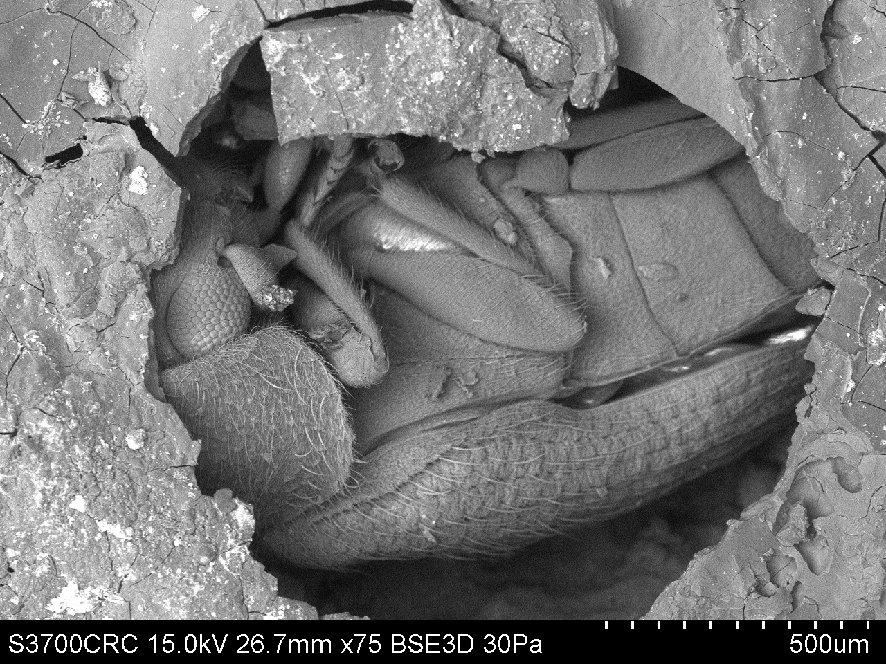Giving a voice to ancient Egyptian poetry
Ostracon with the final lines of The Tale of Sinuhe. Thebes, 19th Dynasty.
How do you capture the ancient resonances of phrases that mean nothing to modern audiences? How do you invest them with meaning and emotion without a set of explanatory footnotes that kill all spontaneity? Oxford University professor Richard Bruce Parkinson worked with actress and writer Barbara Ewing to record a dramatic reading of one of the finest works of Egyptian poetry The Tale of Sinuhe.
Gilded Lady' and Other Exquisite Mummies on Display in NYC
Photographer John Weinstein, Copyright 2015 the Field Museum, A115214d_035B
An Egyptian mummy named the Gilded Lady may be more than 2,000 years old, but visitors can gaze into her brown eyes and admire her dark, curly hair at "Mummies," an exhibit opening Monday (March 20) at the American Museum of Natural History (AMNH) in New York City.
Patrons can't see the Gilded Lady's actual face, of course, but they can look at her exquisitely preserved mummy, including a gleaming gold-painted mask. Nearby is a life-size plastic replica of her skull, created from 3D-printed images of a computed tomography (CT) scan of the mummy's head.
Uncovering a colourful past
A colour reconstruction by illustrator Claire Thorne of the mummy and jars scene found on the outer coffin of Nestawedjat (EA22813A), based on the information provided by multispectral imaging and analysis.
The hidden colours of an ancient Egyptian coffin are revealed through a combination of analysis and non-invasive multispectral imaging techniques. Here Joanne Dyer and Nicola Newman shed light on the process.
9 STUNNING PHOTOS OF THE NEWLY OPENED NATIONAL MUSEUM OF EGYPTIAN CIVILISATION
The newly inaugurated National Museum of Egyptian Civilisation (NMEC) was added to Egypt's long list of exceptional museums last week. The museum is located in the ancient Fustat city, the location of the original city of Cairo, behind the famous Amr Ibn El Aas Mosque, according to the Museum's recently launched Facebook page.
WARFARE AND WEAPONS IN ANCIENT EGYPT Course
Dynastic Egypt united in approximately 3100 BCE. It remained an independent land for much of its 3000 year history, before being absorbed into the Roman Empire in 30 BCE.
During this Dynastic Period, Egypt was able to recover from repeated civil wars and occasional foreign rule, and develop its military power to control a vast empire stretching from Sudan to Syria. The military success shows that Egypt understood the value of an efficient fighting force. Propaganda showing Pharaoh riding into battle standing atop a chariot while his defeated enemies flee before him is one of Egypt’s most enduring images. But how accurate is it? What do we know about the realities of weapons and warfare in ancient Egypt?
Unravel Egypt's history anew at the Textile Museum
Ancient Egyptian patterns (Photo courtsey of the Egyptian Textile museum)
As you walk along Islamic Cairo's famous El-Muezz Street, you will come across a grand Ottoman-era sabil, or building housing a public water fountain.
The sabil of Mohamed Ali is now host to the Egyptian Textile Museum, which narrates the history of the textile industry from the Pharaonic era until today.
New Kingdom mummy mask recovered from France
Photo courtesy of the Ministry of Antiquities
After four years out of Egypt, a stolen and illegally smuggled mummy mask has been returned from France.
Shabaan Abdel Gawad, the general supervisor of the Antiquities Repatriation Sector of the Ministry of Antiquities, told Ahram Online that the mask dates to the New Kingdsom and is carved in wood and depicts human facial features. It was stolen in 2013 along with other artefacts from the Elephantine Antiquities Galleries in Aswan, when it was subject to looting.
Ancient Egyptian bronze cat salvaged from bin
A rare artefact from ancient Egypt nearly ended up in the bin, as its owners cleared out a relative's house in Cornwall thinking it was junk.
Luckily, local auctioneer David Hay salvaged the 2,500 year-old Egyptian cat bronze cat from the bin realising its significance.
Jon Kay explains how the cat made its way to Penzance.
If It's Saint Patrick's Day, It's Time for My Annual Post on the Links between Coptic Egypt and Early Irish Christianity
Every year since 2009, I have reposted or linked to my original 2009 post on the faint but apparently real links between the Coptic Church of Egypt, where monasticism was invented, and the early Irish church.
It's the sort of thing you do when you're a specialist on Egyptian history also named Michael Collins Dunn, but it's also been a popular post. Herewith, with some added illustrations, corrections and updates, the original text:
Watch: 3D tomb of Egyptian treasures set up under Marischal College
Did you know there’s an ancient Egyptian tomb hidden beneath Marischal College?
Well, that’s not strictly true.
But digital artists have created a virtual tomb which shows off objects from the University of Aberdeen Museums collection.

Did you know there’s an ancient Egyptian tomb hidden beneath Marischal College?
Well, that’s not strictly true.
But digital artists have created a virtual tomb which shows off objects from the University of Aberdeen Museums collection.
Photograph of the week
British Museum scientists found beetles in 3,000-year-old Egyptian bread! Here’s a 75 x magnification from a scanning electron microscope.












No comments:
Post a Comment
Note: Only a member of this blog may post a comment.